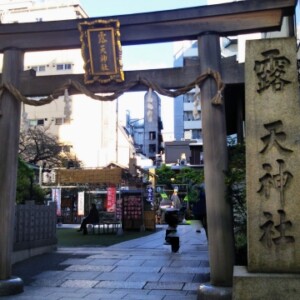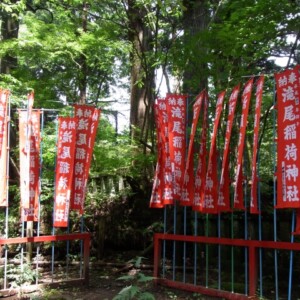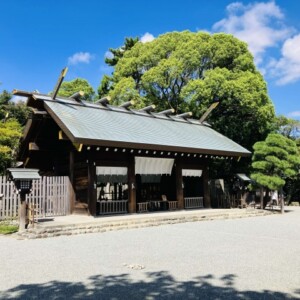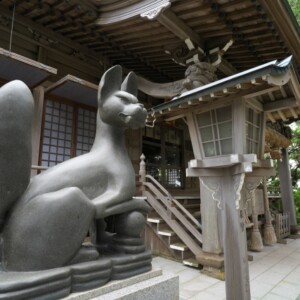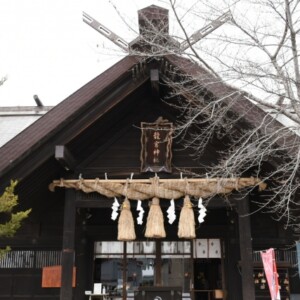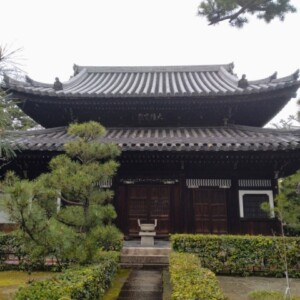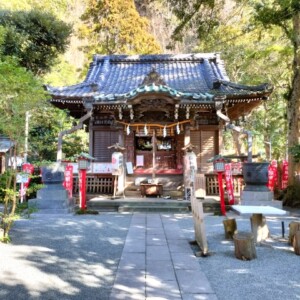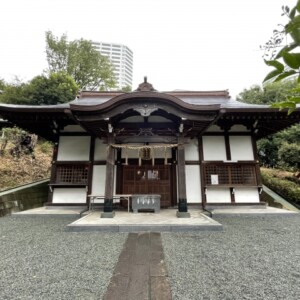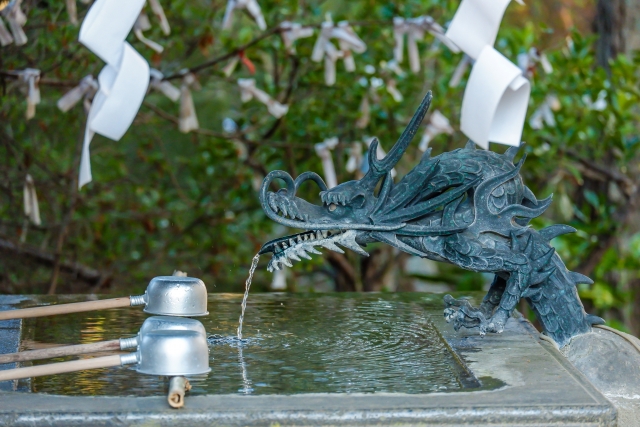
Choshazan Shinra-jinja|Complete guide to the history, highlights, and worship information of this historic shrine
Chojayama Shinra Shrine, located on top of Mt. Chojayama in Hachinohe City, Aomori Prefecture, is a historic shrine known throughout Japan for the Hachinohe Sanja Grand Festival and the Hachinohe Enburi. It continues to be loved by many visitors for its beautiful shrine pavilions dating back to the Edo period and as a valuable cultural heritage site where visitors can experience the rare experience of playing Kishu-Umbari, a ball game played by a mounted warrior, even in Japan.
Outline and basic information about Choshazan Shinra Shrine
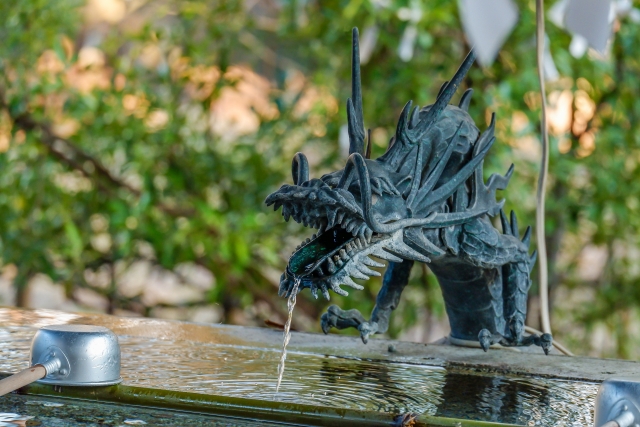
Choshazan Shinra Shrine is located on top of Choshazan Mountain in the south of the city center of Hachinohe City, Aomori Prefecture, and is known locally as “Choshazan. Formerly a prefectural shrine, it is known as one of the most important and revered shrines in Hachinohe City, along with Kushibiki Hachimangu Shrine. The current official name of the shrine is “Chojayama Shilla Shrine,” but it was simply called “Shilla Shrine” until 1976, when the name was changed.
The shrine grounds are surrounded by the lush greenery of Mt. Choja, and visitors can enjoy beautiful seasonal scenery from the approach to the shrine grounds. Especially during the cherry blossom season in spring, the shrine is crowded with many cherry blossom viewers and is one of the most popular cherry blossom viewing spots in Hachinohe City.
History and Origin
The history of Chojayama Shinra Shrine is long, and it is said that various rituals have been held at Chojayama since ancient times. The shrine was officially founded in 1678, when Naomasa Nanbu, the second lord of the Hachinohe Domain, built a shrine on the mountain as a place of prayer for the protection of the domain, a good harvest, peace and health of the people of the domain.
When it was first built, it was called “Sanja-do” or “Kokuzo-do. This is because the first feudal lord, Naobusa Nanbu, built a shrine on the top of Mt. Choja in 1665, and invited Sokienzo and Kokuzo Bosatsu to the shrine. As for the Shilla Shrine, it is attributed to the invocation of Shilla Saburo Yoshimitsu-mikoto (Minamoto no Yoshimitsu), a distant ancestor of the Nanbu Clan.
With the policy of separating Shintoism and Buddhism in the early Meiji period (1869), the shrine name was changed to “Shilla Shrine” and it was listed as a township shrine. In 1881, the shrine was honored with a visit by Emperor Meiji during his tour of the Tohoku region, and a mounted battering ram was presented to the public. The shrine was later promoted to a prefectural shrine, where it remains to this day.
Deities and Benefits
The main deity of Choshazan Shinra Shrine is Shinra Saburo Yoshimitsu no Mikoto (Minamoto no Yoshimitsu). Yoshimitsu was a military commander in the late Heian period and the great-grandfather of the brothers Minamoto no Yoritomo and Yoshitsune. He is known as the founder of the Kai and Hitachi Genji clans, and is especially revered as the distant ancestor of the Nanbu clan.
Yoshimitsu is known as a man of great prowess and valor, and is therefore believed to bring blessings such as longevity of military fortune, improvement in one’s luck in victory, and prosperity of family fortune. Since Yoshimitsu is enshrined as the founder of the Hachinohe domain, the shrine is also associated with wishes for regional development and prosperity, a bountiful harvest, and good health.
There is also a legend on the grounds of the shrine about Yoshitsune’s northward journey, in which Minamoto no Yoshitsune sent his retainers to this area when he fled north from Hiraizumi in Oshu. Because of this historical background, the shrine is also expected to bring blessings for travel safety and protection along the way.
Highlights and Features of Choshazan Shinra Shrine
Choshazan Shinra-jinja Shrine has many attractions, including valuable cultural assets inherited from the Edo period and beautiful natural scenery. From the historical architecture of the shrine to the natural beauty of the four seasons, there is an abundance of elements that will deeply impress visitors.
Architectural and Structural Attractions
The main shrine and worship hall of Choshazan Shinra Shrine are valuable structures designated as important treasures by Aomori Prefecture. The shrine pavilions, which retain the appearance of their original construction in Enpo 6 (1678), are beautifully constructed with the best of Edo period architectural techniques.
Particularly noteworthy are the detailed carvings and vivid tan-nuri decorations on the main hall and worship hall. These carvings, which are characteristic of the Edo period, are a valuable cultural heritage that conveys to the present day the outstanding skills of the craftsmen of the time. The coloring patterns have also been beautifully preserved, allowing visitors to experience up close the aesthetic sense and technical skills of the Edo period.
The temple also has a magnificent gate, another beautiful structure that retains the characteristics of the Edo period, which visitors can enjoy. These buildings have been carefully maintained throughout the long history of the temple, and even today visitors can feel the solemn atmosphere of the time when the temple was founded.
Nature and scenic beauty
Choshazan Shinra Shrine is located on top of Choshazan Mountain, south of downtown Hachinohe, and is blessed with a rich natural environment. The shrine grounds are protected as a jinmu no mori, and a variety of wild birds and plants can be observed throughout the four seasons. It is introduced by the Wild Bird Society of Japan as a representative Chinju-no Mori forest of Hachinohe City. It is a precious natural environment where wild birds such as chigo-hayabusa, Komukidori, and higara breed in summer.
The cherry blossom season in spring is particularly spectacular, with magnificent cherry trees planted in the precincts of the shrine, making it one of the most popular cherry blossom viewing spots in Hachinohe City. During the cherry blossom season, the shrine attracts many cherry blossom viewers, and the combination of beautiful cherry blossoms and the historic shrine pavilions is much loved by many people.
Another attraction of the shrine is the panoramic view of the Hachinohe city area from its location on top of Mt. When visiting the shrine, visitors can pray at the historic shrine and also enjoy the exhilarating view over the city of Hachinohe.
Cultural Properties and Important Collections
A number of valuable cultural assets are preserved at Choshazan Shinra Shrine, including the main shrine and worship hall, which are designated as important prefectural treasures. These cultural assets are carefully preserved as important documents that tell the story of the history and culture of the Hachinohe region.
One of the most valuable cultural events associated with the shrine is the “Kagami-style Kishibari Uchimari,” of which only three examples exist in Japan. This traditional martial art is performed every year on August 2, the middle day of the Hachinohe Sanja Grand Festival, in the cherry blossom stable on the shrine grounds. Kibauchimari has been practiced since ancient times as part of the training of warriors, and today it is an extremely valuable cultural heritage that has been handed down in only three places: the Imperial Household Agency, Yamagata Prefecture, and Chojayama Shinra Shrine.
The sight of four mounted warriors, divided into two groups of red and white, playing with a ball against each other is a precious sight that conveys to the present day the martial arts traditions that have continued since the Heian period (794-1185). Although the game is similar to Western polo, it is a traditional culture that has developed uniquely in Japan, and is a moving experience for many visitors.
Guide to Worship and Visiting
Choshazan Shinra Shrine welcomes many visitors throughout the year and offers special visiting manners, annual events, and the awarding of red seals. It also offers a rare opportunity to experience the traditional culture of Hachinohe, making it a special experience for visitors.
Worship Etiquette and Manners
Visiting Chojayama Shinra-jinja Shrine is done in accordance with the general etiquette for shrine visits. First, bow as you pass through the torii gate, and avoid the center of the path. After purifying your hands and mouth at the hand- and mouth-cleansing booth, proceed to the hall of worship.
The “Nirei Ni-Beat-Itte-Ichirei” manner is used when worshipping at the hall of worship. After making a monetary offering, bow deeply twice, clap your hands twice at chest level, and bow deeply once at the end of the bow. It is important to express your gratitude and wishes wholeheartedly during the visit to the shrine.
Because Choshazan Shinra Shrine is located on a mountain, there are stone steps along the approach to the shrine. Since each step is high, please be careful when going up and down the steps. The shrine grounds are rich in nature, so please be careful to protect wild birds and plants, and visit the shrine quietly.
Annual and Seasonal Events
Various festivals and events are held at Choshazan Shinra Shrine throughout the year, with the Hachinohe Enburi and Hachinohe Sanja Grand Festival being two of the most important and nationally renowned events.
Hachinohe Enburi, held annually from February 17 to 20, is a representative Hachinohe region’s preliminary performance designated as an Important Intangible Folk Cultural Asset. 30 or more “Enburi groups” from Hachinohe City and surrounding municipalities visit the Chojayama Shinra Shrine in the early morning of February 17 to perform a dedication dance. The performance, which is then performed for four days at various locations in the city, is a very valuable cultural heritage as a traditional folk performing art that prays for a good harvest.
The regular festival and the Hachinohe Sanja Grand Festival are held in August. The Hachinohe Sanja Grand Festival is a spectacular festival held jointly by the three shrines, Chojayama Shinra Shrine, Kushibiki Hachimangu Shrine, and Shinmyougu Shrine, with gorgeous doll floats parading through the city. Especially on the middle day of the festival, August 2, “Kagami-ryu Kishi Uchimari” is dedicated in the precincts of Chojayama Shinra Shrine, offering a rare opportunity to observe this precious traditional performance that is unique in the whole country.
Red Seal and Good Luck Charm Information
The Choshazan Shinra Shrine offers red seals, which are popular with many visitors as a commemorative souvenir of their visit to the shrine. You can obtain a red seal in the form of a postcard at the shrine office. It is common practice to visit the shrine office after visiting the shrine to receive a red seal.
Various types of good luck charms and ema (votive picture tablet) are also available at the shrine, and the Enburi Ema (votive picture tablet) is particularly popular as a distinctive good luck charm associated with Hachinohe’s traditional culture. As a shrine dedicated to Shinra Saburo Yoshimitsu, the shrine also offers amulets to pray for good luck in military affairs, luck in victory, and family prosperity.
It is recommended that you contact the shrine in advance for details on the items to be awarded and the hours during which they are available. We recommend that you allow plenty of time for your visit to the shrine, especially during the festival period, when many visitors come to the shrine.
Access and Visiting Information
Choshazan Shinra Shrine is easily accessible from the center of Hachinohe City, and can be visited by public transportation or private car. Because of its location on a mountain, it is advisable to check access and parking information in advance.
Transportation Access
Choshazan Shinra Shrine can be accessed by train, bus, or private car. The nearest station is Hon Hachinohe Station on the JR Hachinohe Line, which is about a 20-25 minute walk from the station to the shrine. From Hachinohe Station, it is approximately 20 minutes away.
Buses are also convenient for public transportation. Take the Hachinohe City Bus or Nanbu Bus, get off at “Nijusankicho” or “Jurokunicho” and walk about 10 minutes to the shrine. By using the bus, you can shorten the walking time from Hon Hachinohe Station.
If accessing the shrine by private car, it is approximately 15 minutes from the Hachinohe Interchange on the Hachinohe Expressway. It is also relatively close to downtown Hachinohe, and with the use of a car navigation system, you can arrive there without getting lost. However, please understand in advance that you will be driving on a mountain road, as Chojayama is a small hill.
<Address> 1-6-10 Chosha, Hachinohe, Aomori Prefecture, 031-0802
Hours of Operation, Fees, and Parking
Choshazan Shinra-jinja Shrine is basically open to visitors year-round, but it is recommended to check in advance about the reception hours of the shrine office and the hours for awarding red seals. There is no time limit for general visitation, but early morning and late evening visits should be discouraged, and it is important to be considerate of neighbors.
There is no fee to visit the shrine. However, during special festivals and events, there may be information and precautions regarding visitation, so please check with the shrine or Hachinohe City Tourist Information in advance.
Parking is available on the shrine grounds for general visitors. However, it is recommended that you consider using public transportation, as it becomes very crowded during major events such as Hachinohe Enburi and Hachinohe Sanja Grand Festival. Also, during the cherry blossom season, many visitors come to the shrine, so it is important to allow plenty of time for your visit.
Since it is necessary to climb stone steps to reach the shrine grounds, visitors with disabilities or the elderly are advised to consult with the shrine in advance. Please contact the shrine directly for more detailed and up-to-date information.
Reference sites
Official website of Choshazan Shinra Shrine: https://www.at-ml.jp/72215/
VISIT HACHINOHE (Hachinohe City Tourism Website): https: //visithachinohe.com/spot/chojasan-shinra-jinja/



